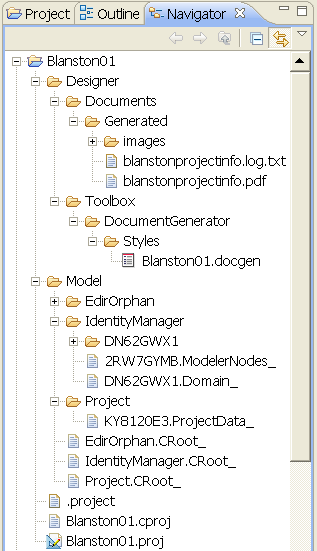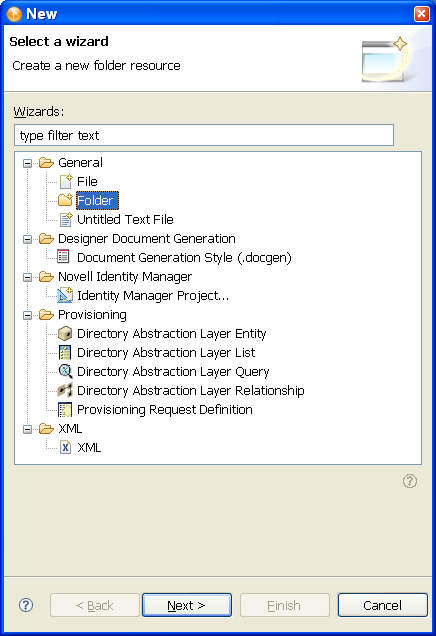4.6 The Navigator View
The Navigator view enables you to manage and view the file resources that are in your workspace. You can see your projects and files as they actually exist in the file system. You can add files and folders, and append them to your projects or workspace. These extra items won’t change or affect the behavior of your Identity solution. However, they enable you to conveniently append other pieces of information that you want to associate with your projects and workspace.
WARNING:Do not use the Navigator View to copy, rename, move, or delete files for a project that is under version control. Performing these operations from the Navigator view does not reflect properly in the Version Control view.
Figure 4-11 The Navigator View

The Navigator view enables you to do the following:
Table 4-3 Navigator View Icons
WARNING:Copy and paste, and drag and drop operations in the Navigator View are not handling files properly if they are under version control. Perform these operations from the Project view if the project is under version control.
In the Navigator view, you can move any document into your project and edit it with a selected editor. For example, you can add a Word* or PowerPoint* document, then double-click the document. The native application loads inside Designer, as any other editor would, where you can view and edit the document. (This feature only works on Windows.)
You can create linked resources at any depth within projects. This allows you to put resources from different places in the file system anywhere you like in the project structure, including below other linked resources. The same resource can be linked to the same project.
To create a linked resource:
-
Select > > .
-
In the Navigator view, right-click a project, then select > .
-
Expand the folder.

-
Select , then click .
-
Click , then select .
-
Browse to and select a folder, click , then click .
Designer creates a link to that folder directly under the project. You can then easily access the folder.
You can use the same procedure to link to a file.